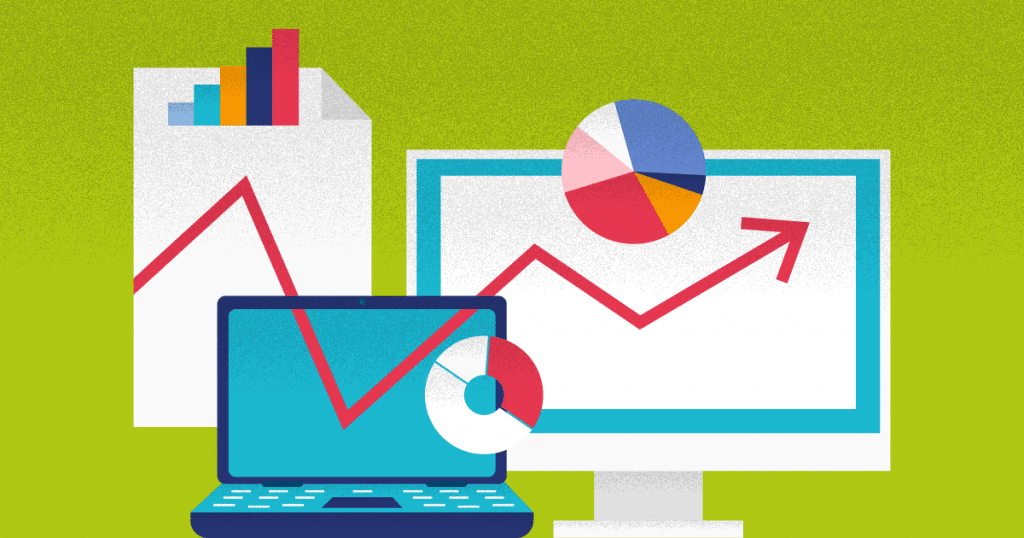Few things in this world are more tedious than sitting through a bad presentation. And while a big portion of its quality is up to the presenter, visuals for presentations play a more important role than most people think.
Ideally, they should be focused on effective client communication. They should complement what the speaker is talking about and create an understandable and simple connection between content and speaker.
Why your presentations should have this kind of dynamics? How can you improve visuals to boost your message and grab the audience’s attention? Let us talk about this point in the following topics:
- 5 ways to boost your visual power
- Reasons why you should use visuals in your presentations
- Pro tips for creating visuals for presentations
Download this post by entering your email below
5 ways to boost your visual power
For you to start getting these benefits, some simple tricks can boost your visuals and, with them, your message. Here are the 5 main ways you can make presentations more engaging and memorable.
1. Speak your words — don’t write them on your slides
Too many presenters add large blocks of text to their slides, thinking this helps enhance their presentation with detailed information.
That’s not true at all. Text — even bullet points — distracts your audience from listening. The human brain has a lot of difficulties listening to speech and reading something different at the same time.
Besides that, reading what is on your slide is just going to bore your audience. People read much faster than a comfortable presentation pace, so they’ll be done with the slide before you finish.
Jonathon Colman definitely knows this, and his slides in “Why Our Content Sucks” expertly incorporate supplementary visuals.
2. Use beautiful images to supplement your content
Beautiful visuals help people remember what you are talking about at the time. You can add to the memorability of your presentation by having compelling images that go along with what you are currently talking about.
This presentation on Digital Citizenship by Alec Couros does a great job of using attractive images to supplement the content the speaker is covering.
3. Make your diagrams interesting — but not self-explanatory
Diagrams are a great way to help explain complicated concepts, but make sure that you actually address them in an interesting way.
Diagrams for a presentation are different from those in standalone content. If it is self-explanatory, it probably gives away too much info, just like reading the text on a slide.
“Conquest of the American West” effectively uses diagrammatic maps to help explain several concepts about manifest destiny and the politics of moving America westward.
4. Use data visualizations to clarify information — not repeat it
Data visualization is the best way to present information. As Hans Rosling proved, well-designed data visualizations can help to enhance a great presentation and create something truly engaging.
As with diagrams, talk about the visualization in a way that helps to clarify and complement. Discuss it on a conceptual level and add context. Don’t just repeat what the visual is already showing.
5. Balance what you say with what your presentation delivers
Above all, remember that the visuals aren’t the whole show. When you’re building your presentation, don’t dump all the knowledge into the visuals. If you do that, then there’s nothing left to present.
The best presentations out there won’t make 100% sense unless you see the presenter deliver it. Many of the slides you’ll see online only give you a general idea of what was being discussed, not of the details, or even the main point.
Dan Gilbert balances visuals and actual presentation very well in “The Surprising Science of Happiness“, with just enough visuals to augment his charismatic presentation, but not so many to draw attention away from the message he is making.
6 reasons why you should use visuals in your presentations
A funny thing to think about presentations is that everyone notices when it is bad — even if they don’t know why. Usually, the problem is in pace, content, or a combination of the two.
What a lot of presenters don’t know is that investing in great visuals help them with both aspects. It makes a presentation more dynamic and conveys its content better.
But how exactly? We listed some of the reasons why you should be investing in visual elements for your next time in front of an audience.
1. To communicate better
“A picture is worth a thousand words”. This saying is really old and worn already, but it will never cease to be true. We, humans, are visual beings. We can grasp meaning and context in a split-second looking at a photo or illustration.
Why not use that power to communicate better? With the support from visual elements, you can enrich arguments, explain points better, give examples that make more sense to your message.
Besides boredom, the worst feeling your audience can feel when watching you is a sense of being lost, not being able to follow your presentation.
In that case, visuals work like an anchor and a compass. You guide their looks and their thoughts through your whole presentation.
2. To communicate more in less time
Bringing the saying back, which is faster — looking at an image or reading a thousand words? The answer is simple and a great point here.
Presentations usually have limited time. Either because there is a tight schedule or simply because people lose their focus after a long period.
Using the right visuals, you can shorten the show or squeeze more out of the time you have. You can expose and explain arguments faster, connect, and talk about more elements simultaneously.
3. To retain the audience’s attention
If we are visual beings, we are naturally attracted by great photos and beautiful graphics. You can use that in your favor.
Visual dynamics can make a presentation less monotonous, telling a story with colors and shapes. They can be intriguing and interesting and change the audience’s point of view several times throughout its duration.
The result is a presentation that makes people feel that less time has passed than it truly has. A sense of flow that engages even makes the audience more participative than usual.
4. To make it memorable
You don’t want to impress just for 40 minutes. When you do a presentation, you want people to remember it and to think a lot about the points you exposed.
Visuals help with that too. When well done and well placed, charts, icons, and photos can create in our memories a stronger link between an image and a number, an idea, or a fact.
When the audience thinks about it later, the connection comes immediately. Not only the content but also your professional image last longer in their minds.
5. To be used in other contexts
A lot of presentations today aren’t made just for the show. With the surge of online education, webinars, and remote work, they can be used as material outside their original context.
Visuals then can help them stand by themselves — cohesive, understandable, independent. They can be shared and reused in various ways for a longer time.
6. To help your image
Yes, great presentations do a lot for their presenters. When its content can retain attention, create a better pace, and an even better delivery, all its charisma goes to you.
So using visuals for presentations will help your career. It will show how you own the matter and how ready you are to talk about it. It is a great tool to convince people of your ideas, to guide a company, and to value your worth as a professional.
Pro tips for creating your visuals for presentations
Now that you understand better why and what to do to improve visuals, we can wrap this up talking about ways you can include these elements. We listed the main approaches to kill it in your next presentation.
Think about a cohesive visual identity
Having a visual identity for presentations is not just a detail. It is the way you connect various media and form a visual cohesion, with different content speaking to each other.
It is important, for example, to reflect the company’s brand and its values. Colors, fonts, shapes. It generates a familiarity that can engage the audience from the title to the end.
Use photos
Photos can be used in a lot of ways to build a better presentation. They can help exemplify, make it more personal, show people and places that matter.
Stock photos are great because of their quality and varied usage, but you can mix them with your pictures that are more direct to the points you are making.
The main thing to have in mind is again cohesiveness. Try to include photos that have similar formats, dimensions, colors, and ratios. Also, show them in a more standardized way so that none stand out and take the audience out of its immersion.
Use illustrations and a great iconography
More than photos, great presentations are all based on the right graphics. Illustrations, icons, design elements, they all guide the audience’s gaze and build a bridge between presenter and content.
So use them a lot. Show and don’t tell. Everything that can be explained visually shouldn’t be written on the screen.
Rely on data visualization
Data visualization is important in a lot of scenarios — reports, meetings, analysis, and also presentations. Charts are great for quickly explaining a number or an indicator. So they are great for supporting your talk.
The best advice we can give is to make them as readable and simple as possible. Great charts are understood in a glance. That way, you can shorten the explanation and bring even more information to the audience with the time you have.
Hire an outsource service
Having specialized help to build data visualization and presentations can save you a lot of time and guarantee you will grab the audience’s attention.
If some people still don’t give it the importance it needs, seeing the benefits we showed you is enough to understand how beautiful and simple content can engage and stick.
So this investment results in great returns. Visuals for presentations boost your message, your arguments, and your career. Just to think more about that you are already getting ahead of the competition.
How about getting that huge help right now? Come visit Visual.ly creative services and let’s talk about how we can improve your image!
<!–[if lte IE 8]><![endif]–> hbspt.cta.load(355484, ‘c060ded0-f017-4df0-92e8-7ace6dd314c0’, {});
hbspt.cta.load(355484, ‘c060ded0-f017-4df0-92e8-7ace6dd314c0’, {});







